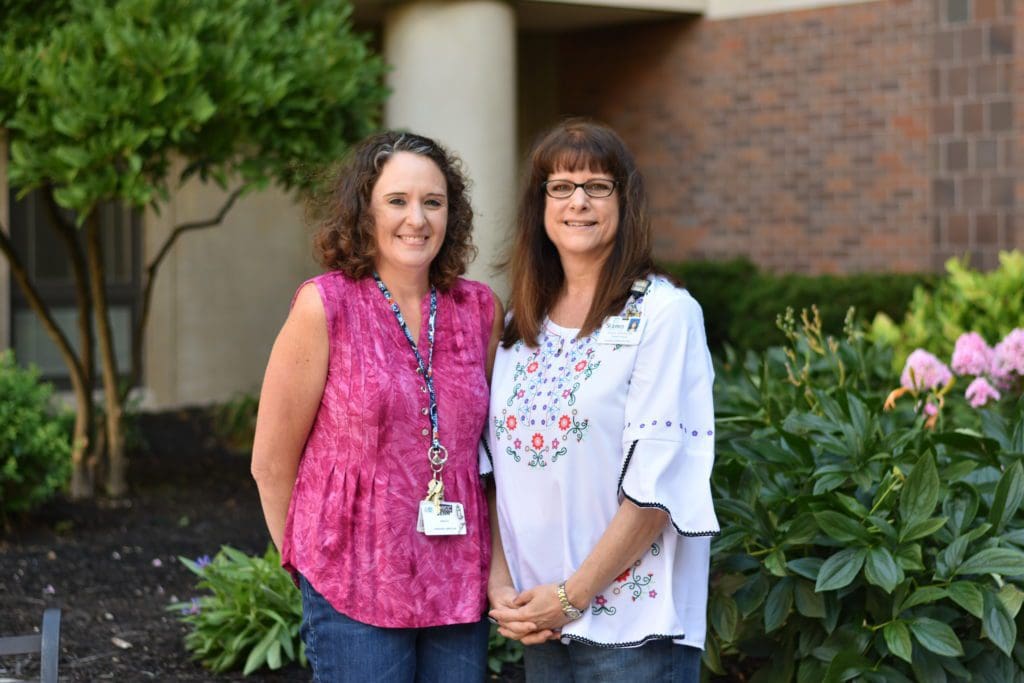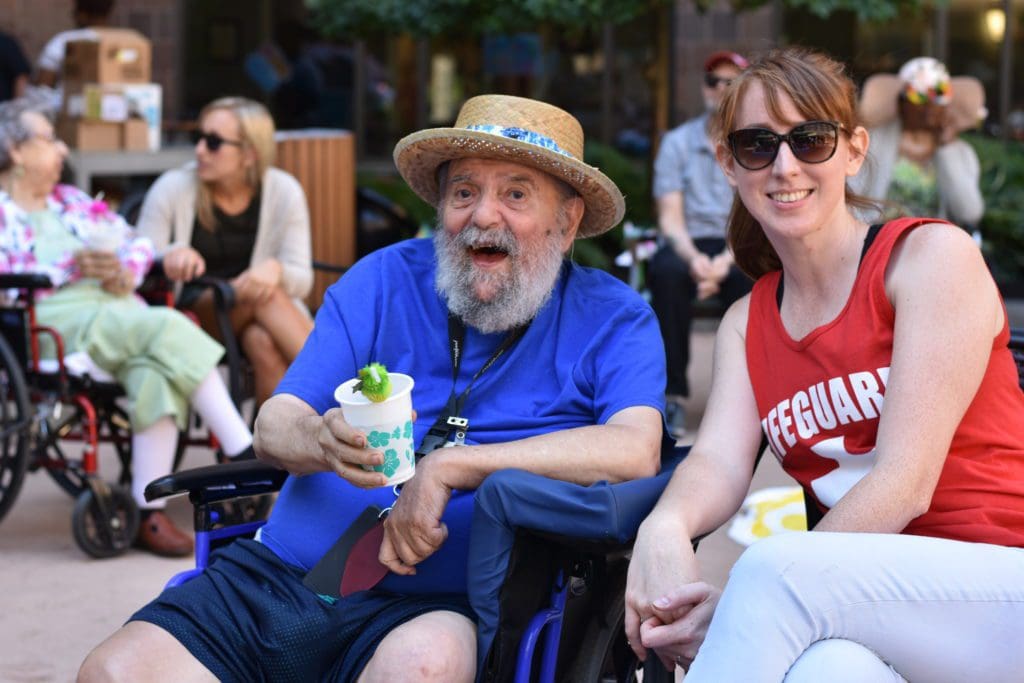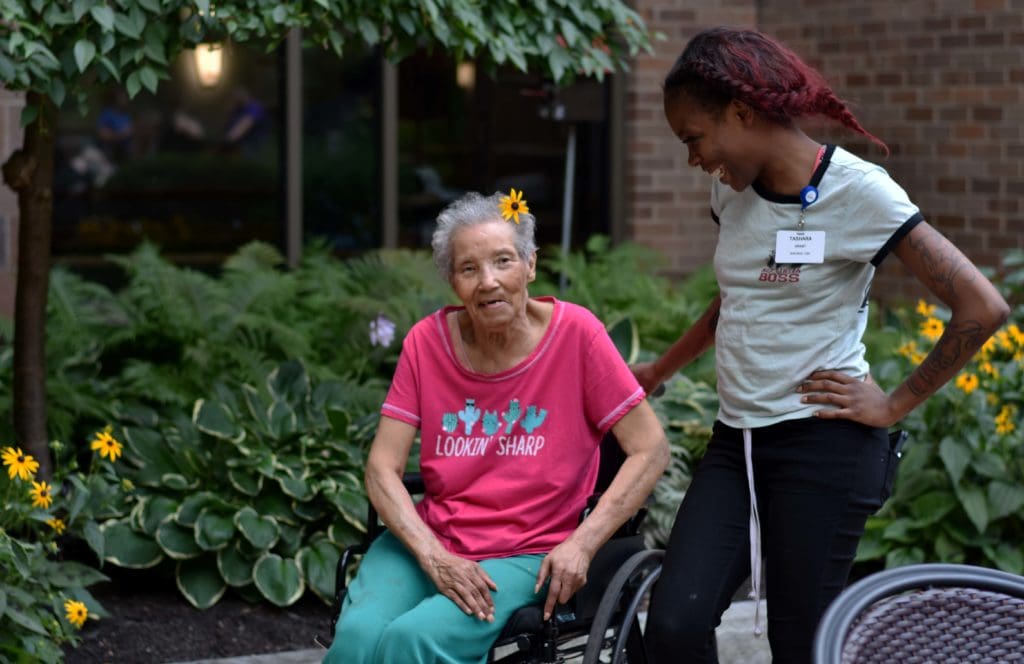Building a Community One Small Home at a Time
For a long time, the goal was to create a home-like environment. My vision is to get rid of the word ‘like’ and make it home. Because home-like is never really home.”
-Diane Bogaczyk
The profession of nursing has drastically changed through the years. Just ask Diane Bogaczyk, St. John’s Director of Nursing. As a nurse for 37 years, Diane remembers the days of wearing full dress whites, calculating drips, and being the physician’s “hand maiden.” The advancement of technology, among other components, has drastically changed the field. “There was a lot more that you had to figure out on your own back then,” recalls Diane.
St. John’s Home resident Barbara Russak also remembers what it was like working as a nurse some 50 years ago. “I remember when there were no machines to calculate drips. Glass bottles for IV medications would need to be manually titrated,” states Barb, who worked as a nurse practitioner at St. John’s Home during her 47 year nursing career.

Assistant Director of Nursing Jennifer DiSalvo also remembers what it was like to be a nurse some 20 years ago. “It is a profession that used to be very strict. Now you can do just about anything. We have a lot more autonomy than in previous years.” Both Jen and Diane agree that nursing today takes on much more of a holistic approach and a huge component of the profession involves building relationships. “The vision that we have for the future is really those relationships. The people who are really doing the hardest job here are the CNAs and nurses that are up on the floors every single day. It is so important to build those relationships with residents and family members so that decisions can be made collaboratively,” states Jen.
At St. John’s Home, the shift from institutionalized nursing homes to smaller more intimate neighborhoods has helped foster a sense of community and connectedness. “Our small homes are a great example of the direction that nursing is moving in,” Diane continues. “We are going beyond just the clinical aspect. We are not just the ones to start IVs. We look at quality of life and the whole family dynamic.” A large part of the transition is training all direct care staff to be universal caregivers who are accountable for direct care, housekeeping, laundry, and other day-to-day life activities for a small number of residents in a specific small home.
What is the St. John’s “Small Homes” initiative?

Today, the small homes initiative reinforces the importance of the intimate relationships between staff members and residents. There is more staff involvement with a ratio of roughly eight residents to one direct care staff member, allowing staff to spend more 1:1 time with residents. “I have a good block of time I can spend with a particular resident,” states Erika Lofton, LPN. “Despite the facility size of St. John’s, you are not just a number.” Erika, like many of her peers, has gone through numerous trainings preparing her for the transition to small homes and the universal caregiver model.
One of the most important, yet challenging, aspects within long-term care is providing residents with a place they can call home. “For a long time, the goal was to create a home-like environment. My vision is to get rid of the word ‘like’ and make it home. Because home-like is never really home,” says Diane. Resident involvement is a key factor in the success of making St. John’s their home. Daily activities within the small home neighborhoods help keep residents engaged with both their peers and staff members. Both planned and unplanned activities focus on bringing meaningful experiences to residents.

Though daily clinical needs take precedent, residents’ days should not revolve around medications and treatments. The job of the direct care staff is to get residents ready for the day and be there if they need something. “Their life needs to be about enjoying themselves, maintaining a comfortable environment, engaging in activities that they are interested in—planned and unplanned—and developing and maintaining those relationships with people who care about them,” states Diane. “That is the difference here than in a typical top-down kind of nursing home.”
